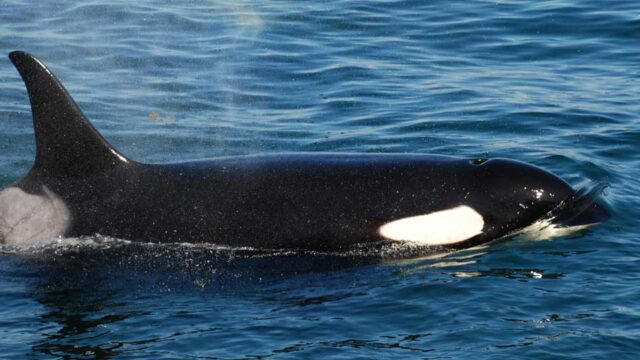You can tell a lot about a Southern Resident killer whale from above.
In my field work with the Coastal Ocean Research Institute, an Ocean Wise initiative, my colleagues and I use drone-based aerial photography to measure orcas from season to season. Changes over time help us gauge the health of both individual whales and the entire population.
These days, the picture is clear: The Southern Resident killer whale population needs help, and urgently.
That’s why I wrote a letter last month in support of a petition to the Minister of Fisheries and Oceans, Dominic LeBlanc, and Minister of Environment and Climate Change Catherine McKenna.
Issued by a coalition of conservation organizations—the David Suzuki Foundation, Ecojustice, Georgia Strait Alliance, Natural Resources Defense Council, Raincoast Conservation Foundation and World Wildlife Fund Canada—the petition urges the ministers to recommend protection for this endangered population in the form of an emergency order under the Species at Risk Act.
Emergency orders are a unique and rarely used tool that allow the federal government to immediately address threats to a species’ survival or recovery. Given the dire situation with Southern Residents, it’s time to pull out the stops to protect them—which is exactly what an emergency order is designed to facilitate.
Only 76 Southern Residents remain, the lowest number in more than three decades.
Most researchers agree that the most significant threats the whales currently face are limited prey and exposure to noise and vessel disturbance that interferes with their ability to forage for prey.
Unlike other types of orcas, resident killer whales rely heavily on salmon for food. Their preferred prey is the Chinook salmon, many stocks of which are themselves depleted. Efforts to rebuild and restore these stocks are already underway, but it can take years to see results. In the meantime, the Southern Residents are at risk of malnutrition.
Anthropogenic, or human-caused, noise also impacts the orcas’ ability to access food. The Southern Residents use echolocation to hunt for prey, including Chinook salmon. Noise from vessels has a masking effect on echolocation, reducing the range over which prey can be detected—making sparse prey even harder to locate. The presence of any vessel close to the whales, from sport fishing boats to whale-watchers to large ships, can also interrupt foraging behaviour.
There are several short-term measures that could be implemented under and emergency order and that would address these threats and increase the killer whales’ access to salmon; they include restrictions on fishing and whale watching in key foraging sites, increased minimum approach distances by whale watching boats, and a cap on the number of boats allowed to approach the whales at any given time.
In recent weeks, we have seen an escalation of discussions on the potential impact of oil spills in BC coastal waters. We have also seen the introduction of new legislation that would change how energy projects are assessed in the future. These complex public debates are likely to take months and even years to play out—time the Southern Residents do not have to spare.
So, in wake of World Whale Day, I’m asking that we take a step back and consider the bigger picture.
Killer whales don’t vote or drink B.C. wine or attend town halls. But, like us, they depend on our government to protect their environment. Under the Species at Risk Act, the federal government has the power to help protect endangered Southern Residents. Acting on it might not always be easy or universally popular, but it is necessary if we want to conserve this iconic population.
Dr. Lance Barrett-Lennard is director of the Cetacean Research Program at Ocean Wise in Vancouver and an adjunct professor in the Department of Zoology at the University of British Columbia.
This opinion piece was originally published in The Hill Times on Feb. 26, 2018.
Photo: Southern Resident chasing Chinook by John Durban, Holly Fearnbach and Lance Barrett-Lennard. Originally shared by Oregon State University, via Flickr. Image obtained under Creative Commons.

